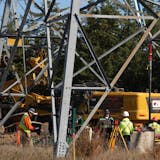CROOKSTON, MINN. – Not again.
That was Crookston Mayor Dale Stainbrook’s reaction to a second fatal police shooting in this college town and farming community of 7,300 people just 45 days after an officer shot and killed another civilian.
“You just don’t see that here and I think we’re all trying to come to terms with it,” Stainbrook said.
Within a matter of weeks, Crookston joined rare company. It’s among 36 other Minnesota cities with two or more fatal police shootings since 2000, according to a Star Tribune database. Those include cities like Duluth, Rochester, Minneapolis, St. Paul and Twin Cities suburbs. Few small towns have had two or more police-involved shootings in the past quarter century.
Even more rare is that both Crookston shootings were at the hands of the same officer: Nick Fladland, 31, who has five years of law enforcement experience. Fladland is on paid leave for an unspecified time. Chief Darin Selzler said that Fladland’s previous leave following the May 16 shooting was 16 days.
On June 30, Fladland shot and killed a California man, Christopher Ryan Junkin, 44, in Crookston’s homeless shelter that remains closed as staff recovers from the tragedy. Junkin’s family said he was unarmed, naked and having a mental health crisis.
Andrew Scott Dale, 35, of Crookston, was wielding a hatchet when Fladland shot him on a residential street six weeks earlier.
“The fact that it’s the same officer in such a short period of time, and the fact that [Junkin] didn’t have a weapon, you know, that’s deeply concerning from a PTSD standpoint,” said Deb LaCroix-Kinniry, a mental health advocate working with Communities United Against Police Brutality, a police watchdog group.


